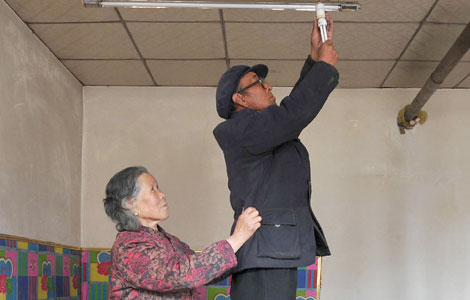China, Switzerland get more to cooperate on
Updated: 2013-05-23 20:14
(Xinhua)
|
|||||||||||
DEEPENING BILATERAL RELATIONS
Swiss media have been enthusiastic in reporting on the progress of free trade agreement (FTA) negotiations between China and Switzerland.
After nine rounds of FTA negotiations, the two nations have narrowed their differences in rules of origin, trade facilitation, intellectual property and competition policy, among others.
Chinese Vice Commerce Minister Jiang Yaoping told reporters on May 16that the two countries have made clear their intentions to conclude the talks, and both hope to reach a mutually beneficial and high-quality agreement as soon as possible.
Experts say the Swiss pharmaceutical and chemical industry, the engineering and watch-making sectors, food producers and tourism stand to benefit from the FTA deal.
Despite the euro-zone sovereign debt crisis and uncertainties in the world economy, the two-way trade volume between China and Switzerland reached 26.3 billion dollars in 2012.
Cai Fangcai, commercial counselor of the Chinese embassy in Switzerland, told Xinhua that Beijing has attached great importance to economic and trade relations with Switzerland.
"Switzerland is located at the heart of Europe. As the nearest non-EU country to the European Union, it has specific geographic and competitive advantages," Cai said.
Cui Hongjian, director of European Studies at the China Institute of International Studies, said that the FTA negotiations between the two countries will set an example for similar negotiations between China and other European nations in the future.
Luzius Wasescha, a special advisor to the Swiss Foreign Ministry, told Xinhua that the two economies are very complementary and Switzerland also wants to attract more Chinese investment.
Roland Decorvet, chairman and CEO of Nestle Greater China, said Nestle has been a big supporter of closer relations between China and Switzerland.
Nestle has 33 factories in China with more to be opened in the coming years, mostly in the central and western regions. More than 90 percent of its products are made locally using local raw materials, Decorvet said.
Related Stories
Li to visit India, Pakistan, Switzerland and Germany 2013-05-14 15:12
ITTF museum to be moved to China from Switzerland 2013-05-16 09:54
Vice premier stresses mutual development with Switzerland 2013-02-19 03:14
BOC to sell its private bank unit in Switzerland 2012-07-25 02:08
Switzerland confirms woman kidnapped in Yemen 2012-03-16 23:41
Switzerland expects more Chinese visitors 2012-02-24 19:27
Today's Top News
China Railway Corp debuts bond issuances
China reassured about EU-US trade pact
Germany at odds with Brussels over solar tariffs
Huawei rejects EU dumping charges
China, Pakistan to bolster ties
Soldier hacked to death in London
Special envoy from DPRK arrives
Consumers' demand for luxuries growing
Hot Topics
Lunar probe , China growth forecasts, Emission rules get tougher, China seen through 'colored lens', International board,
Editor's Picks

|

|

|

|

|

|





